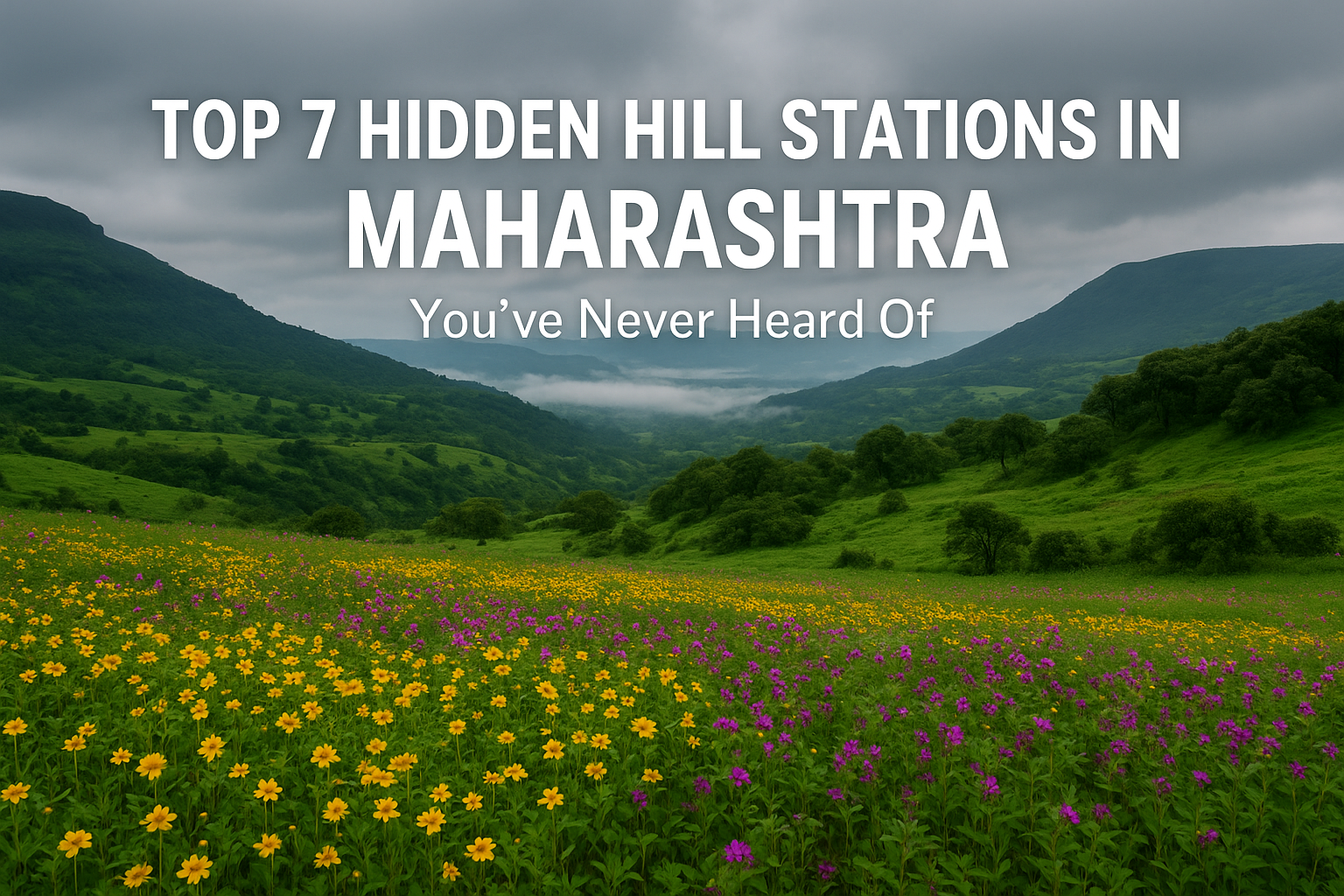1. Kaas Plateau Viewpoint & Surroundings (Satara District)
Overview
Kaas Plateau is known for its stunning wildflower bloom during the monsoon season. While not technically a hill station town, nearby villages and the plateau itself offer incredible elevation, making it one of the quiet Hill Stations in Maharashtra that you may have missed.
Highlights
- Vast fields of colorful wildflowers (particularly blooms like Kaas Pathar bloom)
- Moderate trekking and nature walks
- Less than 20 visitors during off‑season
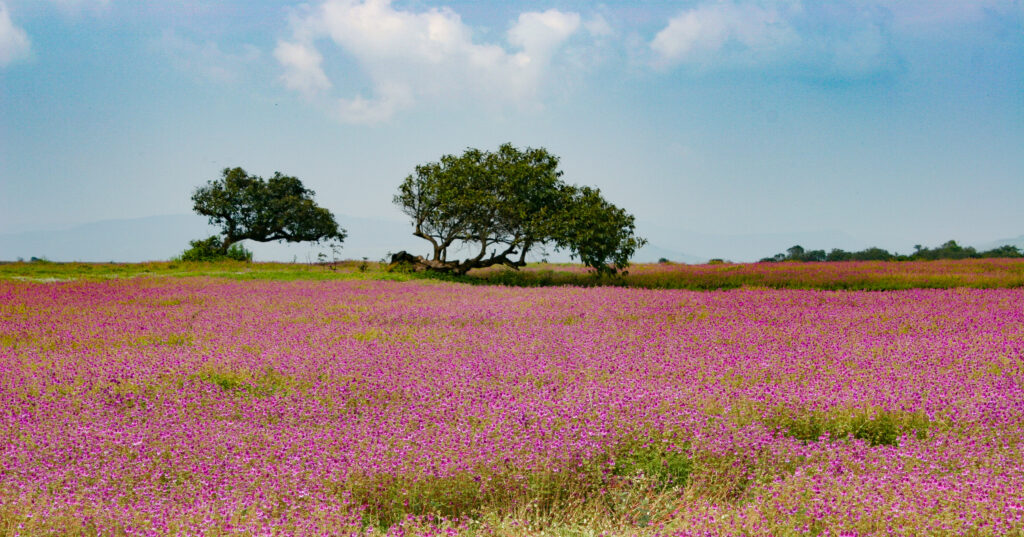
Personal Note
I visited in early September and walked along flower‑carpeted trails under a foggy sky. It felt like walking in a dream. Not many people stayed overnight, so I camped nearby—peaceful beyond words.
Practical Tips
- Best time: August to October
- Accommodation: small guesthouses in Satara or camping near the plateau
- Local transport: shared autos or hired jeeps
2. Amboli (Sindhudurg District)
Overview
Amboli is often described as the “Cherrapunji of Maharashtra” due to its high rainfall. Surrounded by forested hills and waterfalls, it remains under the radar among Hill Stations in Maharashtra.
Highlights
- Lush evergreen forests and waterfalls like Hiranyakeshi and Kavlesaad
- Misty viewpoints with sunrise and sunset vistas
- Tropical climate and biodiversity
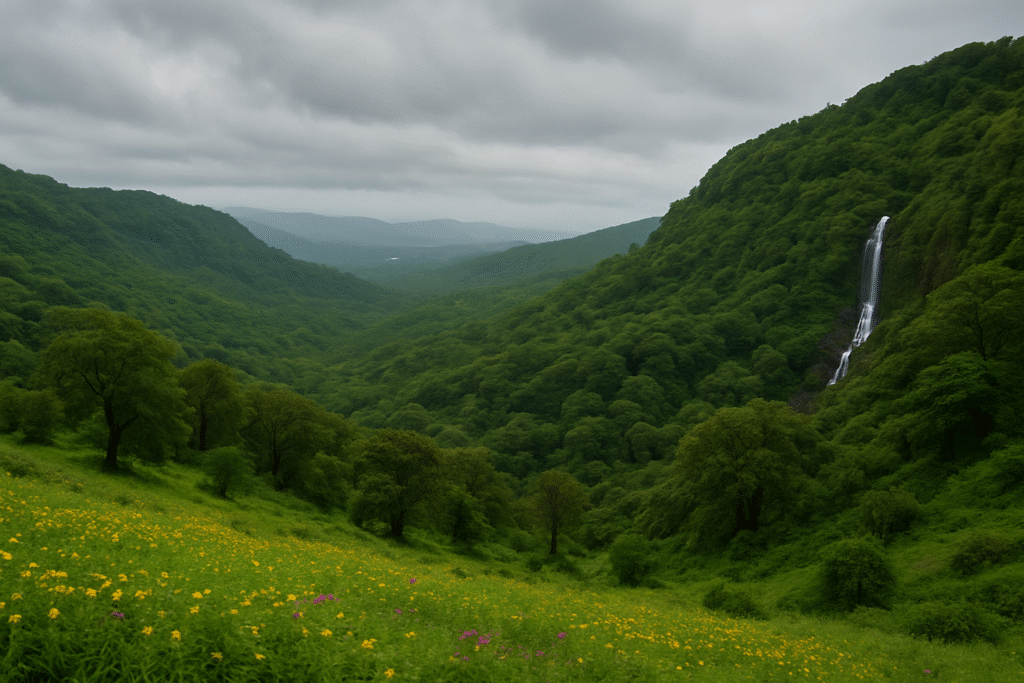
Personal Note
One rainy morning, I woke up to thick fog swirling around, walked through dense forest trails, and found a hidden waterfall. The sound of drips and rustling leaves made it meditative. I loved wandering without any crowds.
Practical Tips
- Best time: June to September for full greenery
- Stay: budget homestays or government guest houses
- Local guides available for nature walks
3. Bhimashankar (Pune District)
Overview
Though it is famous for the Bhimashankar temple and as one of the 12 Jyotirlingas, many travelers overlook it as a Hill Station in Maharashtra. The rural hill terrain around gives it a secluded charm.
Highlights
- Dense forest part of the Western Ghats
- Trekking to Kalsubai or homestay‑based eco tourism
- Temple pilgrimage mixed with nature trails
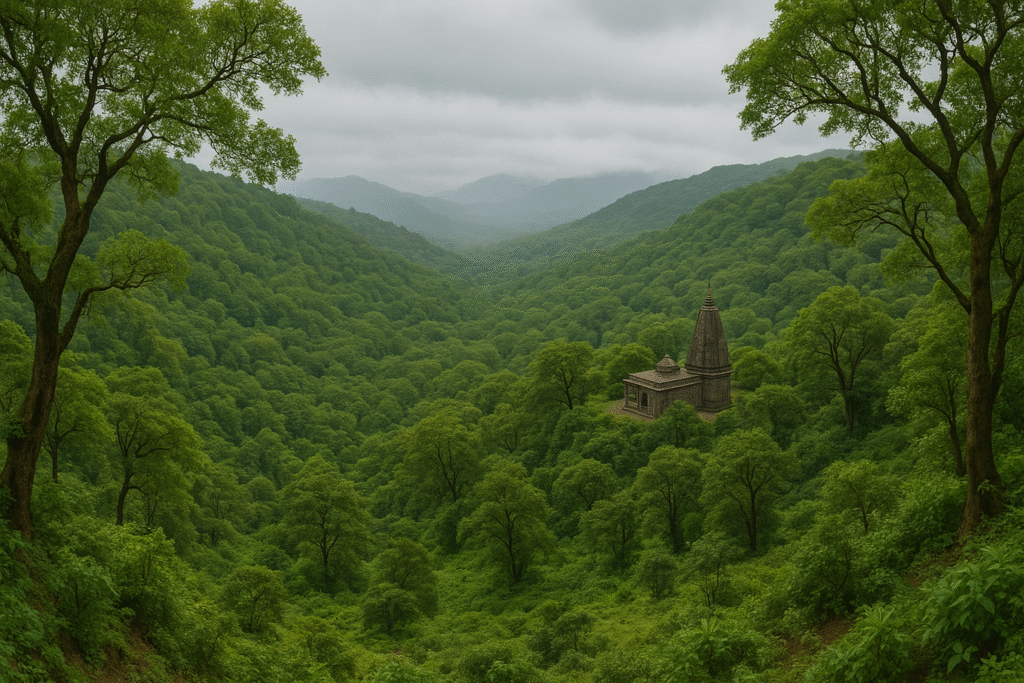
Personal Note
I stayed in a forest homestay, woke up to birdcalls, and trekked through dew‑drenched forests. Evening skies lit up with fireflies. That combination of spiritual calm and wilderness made me feel reborn.
Practical Tips
- Best time: October to March
- Accommodation: forest lodges or simple homestays
- Bring sturdy shoes for trekking
4. Tavda (Thane District)
Overview
Tavda is a small hidden hamlet in Thane, tucked away among hills and forests—one of the lesser‑discovered Hill Stations in Maharashtra.
Highlights
- Peaceful rural setting with valleys and farmland
- Homestays run by local farmers
- Opportunities for organic farming experiences
Personal Note
I stayed with a local family who prepared fresh meals from their garden. In the morning I walked through misty farmland, with birds flitting about and distant hills visible. The genuine warmth of the locals made the place unforgettable.
Practical Tips
- Best time: November to February
- Accommodation: homestays with local hosts
- Food: simple farm‑fresh vegetarian meals
5. Jawhar (Palghar District)
Overview
Jawhar is a tribal hill station famous for its cool climate, lush forests, and waterfalls. It remains one of the quieter Hill Stations in Maharashtra few people know well.
Highlights
- Tribal culture and Warli painting villages
- Sunset points like Hanuman Point and Jai Vilas palace views
- Waterfalls such as Dabhosa and Amboli
Personal Note
I spent a night in a tribal village, painted a small Warli art piece with local artists, and hiked to a sunset viewpoint overlooking endless hills. Sitting quietly, I felt a deep connection to the land and the culture.
Practical Tips
- Best time: October to February
- Stay: government rest houses or small resorts
- Try local Warli art workshops
6. Malshej Ghat (Ahmednagar District)
Overview
Though Malshej Ghat is somewhat known, its off‑season hidden hamlets and viewpoints make it one of the more secluded Hill Stations in Maharashtra worthy of exploration.
Highlights
- Peacock sanctuary and vantage points like Kartik Swami temple
- Waterfalls during monsoon and serene mist
- Rolling hills and valleys
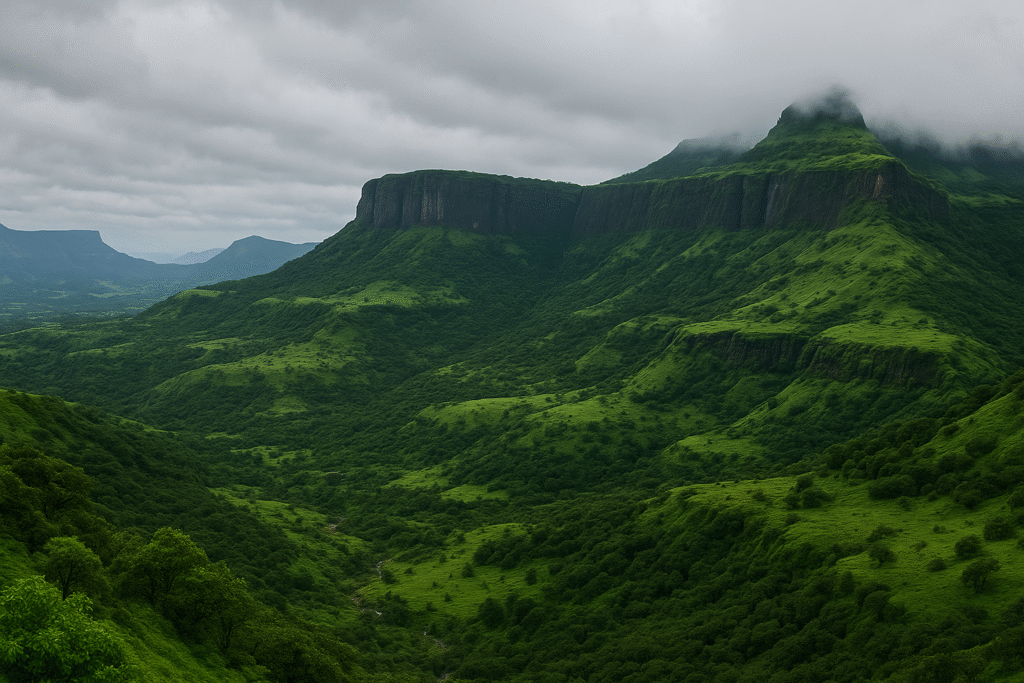
Personal Note
Driving through the ghat during monsoon felt magical—mist hugging the curves, waterfalls spilling onto roads, and hardly any traffic. I pulled over at a viewpoint and watched clouds drift between peaks.
Practical Tips
- Best time: July to September
- Stay: basic resorts or lodges in tiny villages around the ghat
- Wildlife spotting: peacocks and migratory birds
7. Toranmal (Nandurbar District)
Overview
Toranmal is located in the Satpura ranges, far northwest in Maharashtra. It’s one of the most off‑beat Hill Stations in Maharashtra you’ve probably never heard of.
Highlights
- Oval Lake, serene viewpoints, and quiet forests
- Trekking routes like Markandeshwar temple
- Very few commercial hotels, mostly basic lodges
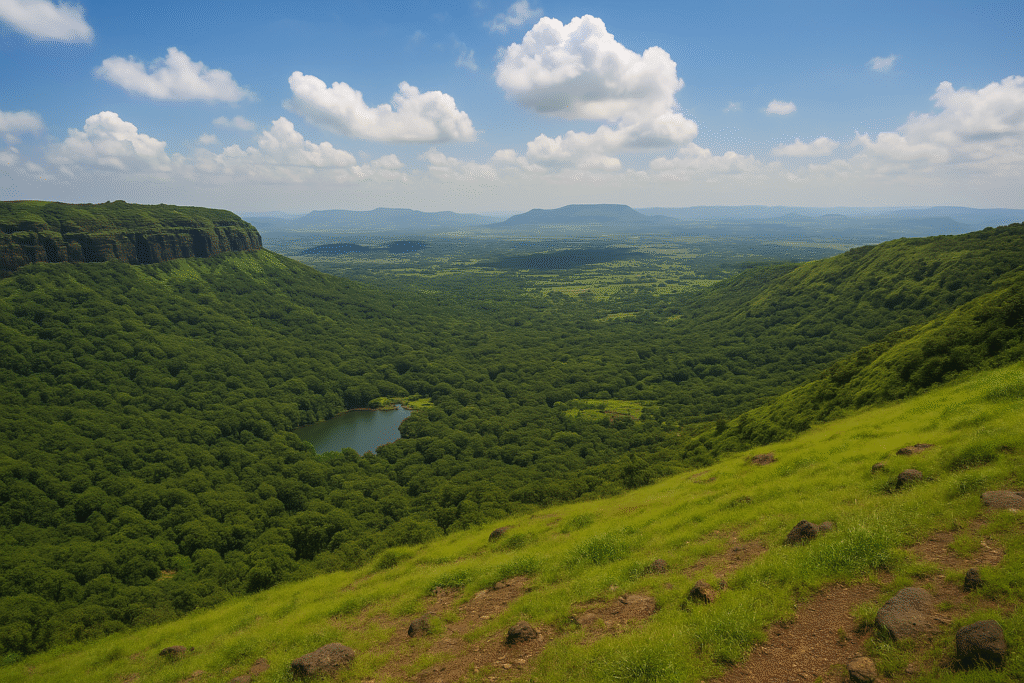
Personal Note
I visited Toranmal in early winter. The lake reflected the hills like a mirror, the air smelled of pine, and nights were crisp and clear. I hiked at dawn, and the rising sun turned the entire valley golden—a spiritual moment.
Practical Tips
- Best time: October to February
- Accommodation: basic lodges or government tourist rest houses
- Pack layers—it gets cold at night
Comparison Table
| Hill Station | District | Highlights | Best Season | Accommodation |
|---|---|---|---|---|
| Kaas Plateau region | Satara | Wildflowers, plateau trekking | Aug to Oct | Camps, guesthouses |
| Amboli | Sindhudurg | Rain forests, waterfalls | Jun to Sep | Homestays, budget stays |
| Bhimashankar | Pune | Forest trekking, temple visits | Oct to Mar | Forest lodges |
| Tavda | Thane | Rural charm, farming experience | Nov to Feb | Homestays |
| Jawhar | Palghar | Tribal culture, waterfalls | Oct to Feb | Resorts, rest houses |
| Malshej Ghat | Ahmednagar | Ghat vistas, peacocks, mist | Jul to Sep | Lodges, village stays |
| Toranmal | Nandurbar | Lake, hills, solitude | Oct to Feb | Lodges, camps |
Travel Tips to Explore Hidden Hill Stations in Maharashtra
- Plan your visit in the right season: For lush greenery, monsoon is great; for trekking and mild weather, winter to early spring is ideal.
- Book stays in advance: Many of these places have limited accommodation, so plan early.
- Hire local guides when needed: Especially in remote areas like Amboli or Toranmal, local guides enhance the experience and ensure safety.
- Pack appropriately: Layers, rain gear, sturdy shoes, and basic medications.
- Respect the environment and culture: Most spots are eco‑sensitive; avoid littering and follow local customs.
- Combine with other travel resources: Since you’re exploring India, check travel insurance options like “best travel insurance plans for Indians in 2025” here: https://vistavocals.com/best-travel-insurance-plans-for-indians-in-2025/
- Make use of scenic train routes: Some hill stations can be reached by scenic train journeys – read more about breathtaking and scenic train journeys in India: https://vistavocals.com/breathtaking-and-scenic-train-journeys-in-india/
Personal Reflections on Hidden Hill Stations in Maharashtra
From the wildflower carpets at Kaas to the tribal art in Jawhar, these Hill Stations in Maharashtra each offered something different. I found solace in the misty rain forests of Amboli, spiritual calm in Bhimashankar’s temple hills, and genuine hospitality in Tavda’s farming families.
The best moments for me were simple: sipping tea as fog enveloped the valley, chatting with villagers under a mango tree, and hiking alone at sunrise. These places rarely make travel itineraries, but they left unforgettable impressions on me.
Why You Should Visit These Hidden Hill Stations
- Authentic experiences: These are real, not commercialized tourist traps.
- Value for money: Affordable stays and food compared to crowded hill resorts.
- Nature immersion: Dense forests, lakes, wildflowers, waterfalls, and birdlife.
- Escape crowds: Peaceful and quiet even during peak seasons.
- Cultural depth: Engage with tribal communities, art forms, and rural hospitality.
Exploring Hill Stations in Maharashtra like these is not just about sightseeing—it’s about connecting with nature and culture on a deeper level.
Conclusion and Call to Action
To sum up, Maharashtra’s hidden gems—Kaas Plateau region, Amboli, Bhimashankar, Tavda, Jawhar, Malshej Ghat, and Toranmal—are perfect for travelers seeking unexplored landscapes among Hill Stations in Maharashtra. With lush greenery, quiet valleys, and authentic interactions, these destinations are refreshing escapes.
If you’re ready to plan your next getaway, remember:
- Choose the right season.
- Book accommodations early.
- Embrace local customs and sustainable travel.
- Also consider travel planning resources like visa information: https://vistavocals.com/visa-free-countries-for-indian-passport-holders/ and top international trips under one lakh rupees: https://vistavocals.com/top-10-international-trips-under-1-lakh-rupees
Pack your bags, breathe in the misty air of these hidden Hill Stations in Maharashtra, and uncover experiences you’ll cherish forever.
Ready to explore one of these hidden hill stations? Leave a comment below with your favorite, or ask me anything about planning your trip. Let’s make your next hill station adventure unforgettable!
